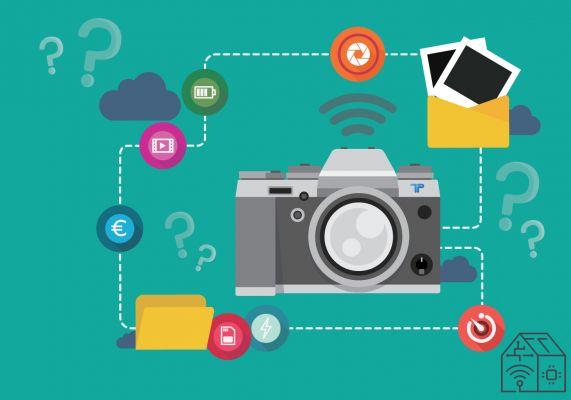
Best camera: here's how to choose it
One of the recurring questions I find myself having to answer is: “I want to buy a new camera, which one do you recommend?”. Quite right to ask me that I have tried almost all the cameras released on the market in the last 15 years, but I can assure you that it is difficult to give an exact answer. Everyone's needs are different and the offer is really wide. Furthermore, we all already have good cameras in our smartphones and thus the story becomes even more complicated. We can choose from many brands, including price ranges ranging from a few hundred to several thousand euros.
And it is for this reason that I have prepared a guide dedicated to how to choose a camera, touching on all the aspects to be taken into consideration before investing any money. So make yourself comfortable because it will be long. But if you already understand the differences between compact cameras, mirrorless cameras and reflex cameras and what the market offers, you can jump directly to the paragraph dedicated to the choice and save some time. Even if you miss some suggestions on the models I prefer in the various categories!
Compact cameras
If you are thinking of taking a step beyond photographing with your smartphone, the first and simplest option is to choose a compact camera. The constant, in this context, is that thelens is integrated into the camera, but the options available are certainly not lacking. There are those with larger sensors, with bright lenses, with manual functions or perhaps those with a powerful zoom. There are also action cameras such as GoPro or waterproof ones, ideal for beach holidays.
It must certainly be emphasized that the quality of smartphones has led to a significant decrease in sales in this segment. And, therefore, if a good part of the potential audience no longer feels the need for an automatic compact camera, companies have responded to this situation by aiming higher. In recent years we have seen the birth of fewer and fewer products, but of excellent quality and often also at high prices. Having a compact camera today means having a tool capable of high performance and often born for specific purposes.
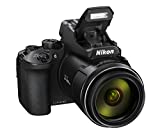 Nikon Coolpix P950 Digital Camera, CMOS Sensor 16,79 ...
Nikon Coolpix P950 Digital Camera, CMOS Sensor 16,79 ...
- Bright nikkor lens with maximum aperture f / 2.8 and super ed glass lens to reduce distortion at zoom ...
- 16mp back-illuminated cmos sensor, fast expeed image processing processor and ...
- Save and export uncompressed raw (nrw) images ready for editing with development / processing / editing programs
If until a few years ago it was easy to find compacts even for less than 100 euros, today that range practically no longer exists and to take home a good pocket camera must invest from 300 euros upwards. But watch out for the offers, because the fact that the market segment is in difficulty has meant that often and willingly you can find excellent cameras at enviable prices.
If what you are looking for is a camera that can bring you so close to the subjects you must undoubtedly aim for the so-called bridge: I'm talking about those cameras characterized by a shape that resembles those of reflex cameras because they have a large focal range. They are in fact also defined superzoom and can even reach the equivalent of a 3000mm (125x). This kind of camera offers you great versatility of use in a relatively compact body. To give some examples, I can mention the Nikon P1000, which however costs more than 1000 euros because of its incredible quality zoom. From the same family, but at a cheaper price, is the NikonP900.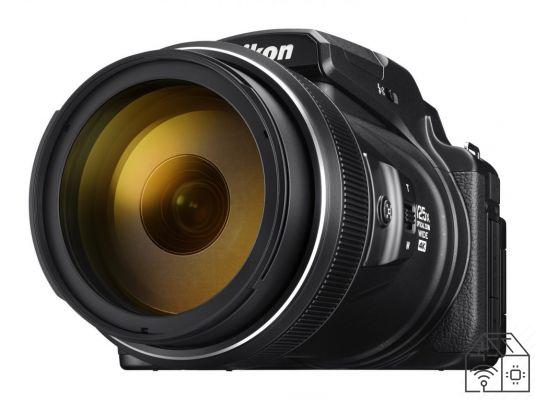
Also part of this category is the Sony RX10 series, now in its fourth generation and which in addition to offering a large focal range is also characterized by a larger sensor size. The size of the sensor is a fundamental aspect, more than the amount of megapixels it is equipped with, but I will tell you more about this aspect in the dedicated section. To buy a Sony RX10 you go from around 650 euros for the first version to over 1500 for the most recent one. The fact of being able to count on a sensor of 1 inch in size drastically increases the cost, but also the image quality offered. If you like the characteristics of Sony cameras, but you cannot afford such an expense, you could give up the sensor so large and think of the RX100 series, which is also valid.
Also included in the superzoom category are many compacts with a decidedly smaller and more pocket-sized body, but which clearly cannot reach the focal excursions and the optical quality of bridges. There is the Lumix TZ series to give an example. And precisely because I mentioned Lumix I go straight to the next category, that of cameras rugged. They are the compact ones with a robust and waterproof body, ideal for holidays by the sea or in the mountains without having to worry about water, accidental falls or temperatures that are too low. To buy such a camera you don't always have to spend a fortune, for example the Lumix FT series, in particular the FT7. The quality that these cameras achieve is not exceptional, however, almost all are equipped with GPS systems, video capabilities and everything you need to photograph where we would not have the courage to carry more expensive tools!
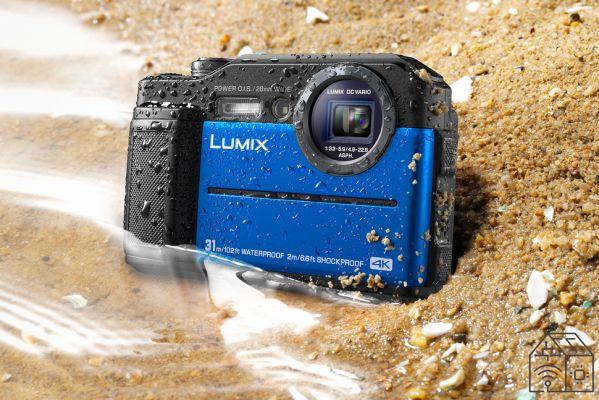
The last range of compact cameras that today makes sense to choose is the defined one . The name itself defines them as quality instruments, characterized by large sensors and bright lenses (sometimes even with a fixed focal length, therefore without zoom if not digitally). These cameras also have all manual shooting modes, so they are suitable for a more experienced audience who can handle them and exploit their full potential. Many professional photographers also use them as a second body, the one to always carry with you without having to compromise on quality and possibly the uncompressed format (RAW). To give some examples I can mention the Ricoh GRIII, loved by many streetphotographer, the Lumix LX100 II or the Fujifilm X100V starting to rise in price. These cameras start from around € 700 of the small Panasonic to reach much higher figures, as in the cases of the Sony RX1 or the Leica Q2.
Fotocamere mirrorless
The English name that defines this kind of cameras indicates exactly the fundamental characteristic: there is no mirror typical of the reflex system. In addition to the mirror we do not even find an optical viewfinder, but only the digital one, except as a hybrid solution. Mirrorless cameras are those cameras that always work in live-view, whether you use the electronic viewfinder or the display.
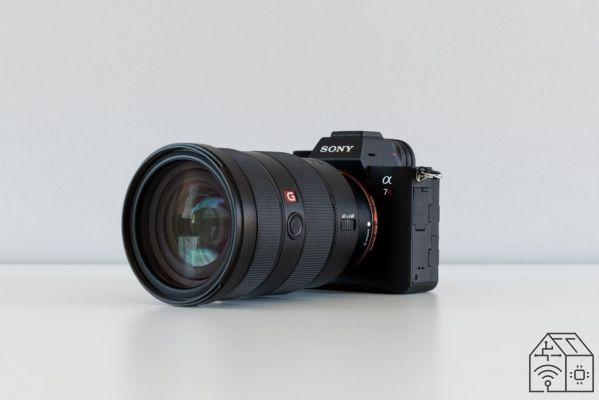
The price range that embraces this category is very extensive and if we certainly start from higher figures than those of compact cameras, we can find many at lower prices than the premium ones. The heart of these cameras is obviously the sensor, but we can find ourselves in front of three different main scenarios: the Micro Four Thirds, the sensors APS-C and those Full-Frame. The former are the evolution from which Panasonic and Olympus gave birth to this sector, now more than 10 years ago, and are characterized by small dimensions compared to other formats. If on the one hand they allow you to build cameras with very small dimensions, on the other there are limits to collide with, dictated precisely by the size. Fujifilm has embraced the APS-C sensor line, although it has recently also developed its own medium-format range, while Sony was the first to add full-format alongside APS-C. Only in 2018 Canon and Nikon were able to offer quality mirrorless cameras by focusing on Full-Frame as Sony and Panasonic with the S series also arrived. Going even higher we find the medium format, which in addition to the aforementioned Fujifilm sees Hasselblad as the protagonist.
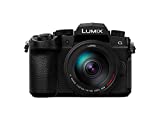 Panasonic DC-G90HEB-K - Mirrorless Digital Camera with ...
Panasonic DC-G90HEB-K - Mirrorless Digital Camera with ...
- It has a 20 megapixel MOS sensor with no low pass filter. The combination of a Venus motor at high ...
- Combining body and lens stabilization technology, the integrated 2-axis Dual IS5 allows you to ...
- High speed autofocus (0,07sec) using DFD (depth to defocus) technology (240fps) and ...
All mirrorless cameras on the market now have at least 20 million pixels, which I can guarantee are more than enough for most of us. Only those who really need high resolution - commercial photographers for example - should look to models like the Sony A7RIV that even offers 61 megapixels. The cameras between 20 and 26 megapixels are still an excellent compress for those who have no special needs, because inside good-sized sensors there are not too many pixels piled up, which do not benefit the quality of image. Cameras like the Lumix G90 or G9 (if you are interested in the Micro Four Thirds format) are still a guarantee today and have relatively low costs. In the APS-C field, the offer is much wider and there are many factors to consider before choosing a camera, such as the aspect of the dimensions or the video capabilities, in addition to the purely photographic one. In the entry-level range, Fujifilm's new X-T200 is very interesting, while making a first step upwards a good compromise between quality and portability is represented by the Canon RP and Sony a6600. Raising the bar again, you begin to enter the semi-professional and professional world, with increasingly performing models and prices that soar up to over 5000 euros. But if you're here to figure out how to choose a camera I'm pretty sure they're not the one for you.
Reflex cameras
With the exponential growth of the mirrorless sector, traditional reflex cameras are slowing down both in production and development and consequently also in sales. But among the classic reflex cameras there is still a really wide choice, even more than in the mirrorless world. There are, in fact, cameras that can cost a few hundred euros, but also those that fly up to over 6000 euros.
The first aspect to keep in mind when choosing an SLR camera, even a low-end one, is that it will almost certainly offer image quality superior to that of a compact, due to the size of the sensor. And so the first suggestion I can give you is to consider a 500 euro SLR compared to a compact that costs the same amount. Unless you're really looking for a small camera.
A myth that is now more than dispelled is that of the best quality compared to mirrorless cameras: today it no longer makes sense to talk about this, but about why one type of camera is more suitable than the other according to the requirements. For example, it is not disputed that the optical viewfinder is still preferred by many photographers, especially in the sports field, even if the quality of the electronic ones is now really high. Another aspect for which you may prefer the reflex is the battery life which in mirrorless cameras is penalized by the amount of electronics and by having to power two screens (electronic viewfinder and display). A good quality reflex allows us to take even more than 1000 photographs with a single charge, with a mirrorless camera we are on 300/400 photographs. But then, instead, to the advantage of mirrorless there are certainly weight, dimensions and video quality that on average are not comparable to those of reflex systems.
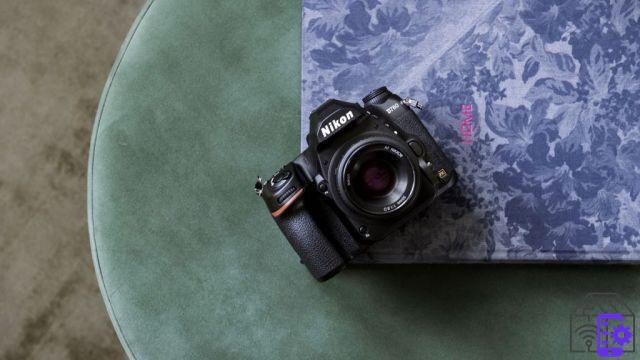
But which reflex to buy? Also for this category I leave you my suggestions, starting from the entry-level models, considering that the choice will almost always be limited between Canon and Nikon, except for some Pentax insertions. And so let's start with Canon whose first offer is represented by the small EOS 2000D (currently on offer on Amazon for only 339 euros). It is a solution, even Nikon offers a variant on the same level, compact and economical which could represent the first approach to the world of reflex cameras for those on a budget. If already the nest egg to invest were more important, I would directly make the leap towards a model able to help us understand the mechanics of a reflex without too many complications, but which over time can also guarantee us to evolve and grow as photographers without having to invest in little. time on a new camera body. I'm talking about products like the Nikon D7500 which, although it is a camera that has a few years on its shoulders, will be able to take us directly to a higher level in terms of ergonomics, layout of controls and, in general, user experience.
Then there is that very interesting middle ground, which is represented by cameras with professional features but which do not have a full-frame sensor inside them. These are perfect for those who not only want to raise the quality of their images, but for those who want to seriously delve into photography. They are cameras that even professionals sometimes have in their kit, when they need a certain quality but also to be lighter. The differences with the superior models also lie in the materials used for the body, which are still for the most part plastic but which guarantee good resistance to bad weather and also to wear over time. We will have to invest a lot of money, but it will be money well spent that will allow us to use the same camera for a long time.
Finally, we come to professional models, such as the Nikon D850 or the latest addition to Canon, the EOS-1D X Mark III, without forgetting the EOS 5 series from Canon. Prices are comparable to top-of-the-range mirrorless cameras.
How to choose the best camera: the beginning
But if what I have illustrated to you are the possibilities that the market presents to you, what are the parameters to evaluate. in addition to the price and the membership range. to choose the best camera possible?
It is clear that price will always be the first point of reference for choosing a camera. Once the budget has been allocated, we evaluate what we can buy with that amount. And always keep in mind that it is absolutely not necessary to spend a fortune to find the right camera for you. The higher-end models probably have many features that you will never use, but if the intention is to commit to the point of making photography your main passion it might also make sense to invest in a top-of-the-range product right away. But always remember that the camera is not the photographer.
Ergonomics
After the price aspect, let's see what are the fundamental parameters to keep in mind before proceeding with the purchase of a camera. And so: what do you have to do with it? Only photographs or even videos? Here, different scenarios immediately open up. The first is related to camera size you want to buy and the second, closely related to the first, concerns ergonomics. It is important to buy a product that is practical and comfortable. As much as possible, at least try to hold a camera before opening your wallet. You will immediately understand if it is the right size, if it is too heavy or perhaps it has too small buttons.
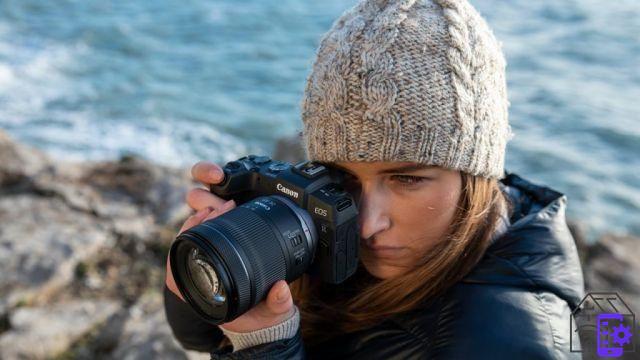
Today many models are equipped with adjustable screens but above all with touch technology that recalls the experience of using smartphones. Try to see if it is responsive, if everything seems clear and simple to you, because it changes a lot from model to model. Above all, responsiveness is important - it can be frustrating to have to struggle with the display because it doesn't instantly trigger the function you called up.
Choosing a camera: how important are megapixels?
The first item that will jump to your eyes when looking at the specifications of a camera will certainly be the one on megapixels. Whether they are 16, 20, 24 or more is not the fundamental characteristic on which to base the choice of a camera. Many different cameras can say they have 20 megapixels, even there are smartphones that boast of having more than 100, but what matters is the type of sensor. It would be like saying that since I have two legs I can run at the same speed as Usain Bolt. This is not the case and I don't think we need to underline it. What matters most in evaluating a sensor is not the megapixels but the size of the sensor itself. The compact of the first price tend to have a sensor from 1 / 2,3 of an inch in which there are perhaps 24 million pixels, the same number that we find on a reflex, which however has a much larger sensor. Will the results then be the same? No, absolutely no. From a larger sensor we will have a better quality in terms of definition, color rendering, depth of field and will be able to better manage the digital noise that will be seen much more easily in a compact. This is true for both compact cameras and interchangeable lens cameras.
The objectives
Another important aspect to consider when choosing a camera is precisely the quality of the lens, because often the optics are more important than the rest of the camera itself. And therefore, in general, if you want to have a highly reliable compact from a qualitative point of view, make sure of the goodness of the optics. This will probably mean going to choose a premium compact and then spend a lot of money, so it might be cheaper to buy a SLR or a mirrorless with an extra lens than the standard one. The lens that comes as a kit with DSLRs and mirrorless cameras is often a small zoom lens that is unlikely to help show you the camera's full potential.
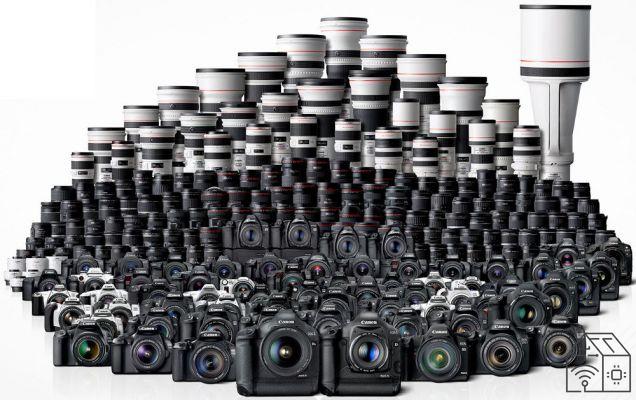
Goals can cost a fortune, but to create your first kit you just need to spend little. So, if you choose a reflex camera, not just to take it on vacation and have family memories, remember that a better quality lens than the standard one is almost an obligation. And be careful not to get confused, each brand has its own line of optics and they are not interchangeable between models of different brands. Unless you use special adapters, but that's another story.
There are actually two exceptions to this condition: the first is found with the Micro Four Thirds mirrorless, with Panasonic and Olympus optics that can be changed on the models of both brands. The second still sees Panasonic protagonist, but this time we are talking about high-priced models that boast the same attachment for lenses with Leica and Sigma. In fact, these three brands signed an alliance two years ago to develop camera bodies and lenses around the same bayonet.
However, there are many independent manufacturers such as Sigma, Tamron or Tokina who make optics for almost all brands and which you will also find at cheaper prices.
I won't elaborate further on the objective issue because there will also be a detailed guide on this topic, so have faith!
Among the other features to keep in mind related to optics there is also the image stabilization. If you want to buy a compact with a large focal range, be careful to verify that the lens is equipped with a stabilization system. This technology will allow to minimize the vibrations given by the movement, even accidental, of the camera at the moment of shooting. The images will be sharper. Speaking instead of interchangeable lens cameras, it must be considered that many cameras offer this integrated system on the sensor. Automatically every optic that will be mounted on it will be stabilized and even if the optic itself is equipped with stabilization, the two systems will often work in pairs to increase the effectiveness of the stabilization.
functions
Today, even the cheapest models come with tons of modes, but they are almost always all set to be managed independently from the camera. So if you don't know anything about photography and you don't intend to deepen it won't be a problem, indeed, it will certainly help you to have someone think about the shooting settings for you.
If, on the other hand, you want something more, choose a camera that gives you the opportunity to experiment and work with manual settings it is definitely the way to go. You will become aware of what times, apertures and ISO values are. Maybe even the difference between a RAW and a JPEG file. JPEG is the most common digital format of an image and every camera produces images in this format. However, it is a file that is directly compressed by the camera when it is saved on your memory card to reduce its weight. This means that a lot of information related to the shot will be lost and you will have less chance to intervene in post-production. So choosing a camera that also offers RAW format if it fits your budget is important.
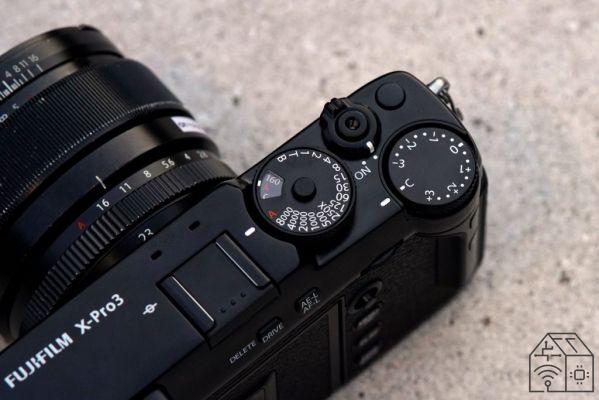
Like smartphones, modern cameras are also equipped with connection systems, such as Wi-Fi or Bluetooth. Social sharing has become part of our life and therefore we cannot ignore a direct connection system that allows us to immediately send the shots taken to a smartphone to be able to share them on social networks.
Best camera: waterproof or not?
I immediately clarify a very important aspect: a camera that is weatherproof, to dust and cold does not mean that it is also resistant to water, in the sense that you can immerse it in the pool or in the sea. It means that if it rains you can take pictures without problems, that if you are in the mountains and it also snows or that if you are taking a tour in the desert the dust will not filter through any gaskets.
Spoiler alert: if you change lenses in the desert, you can be sure that you will find a lot of dust on the sensor!
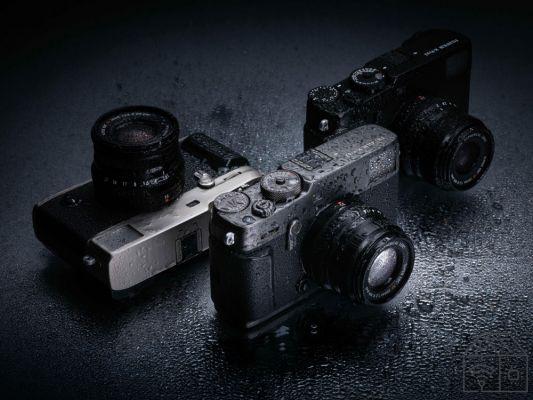
Having made this due premise, waterproof cameras are the ones I talked about earlier, the rugged ones. Those cameras are made on purpose to be able to be immersed and photographed below the water level, all the others, as just explained, better not prune them for snorkeling. The aspect of the body's resistance to atmospheric agents is certainly one of those that raises the price, so if you don't plan to use the camera in adverse conditions, perhaps you can do without it.
And the video?
If in addition to photos you also want to be able to record quality videos, know that almost all modern cameras are capable of recording in 4K. Some high-end mirrorless cameras are even comparable to professional video cameras for the functions they are equipped with!
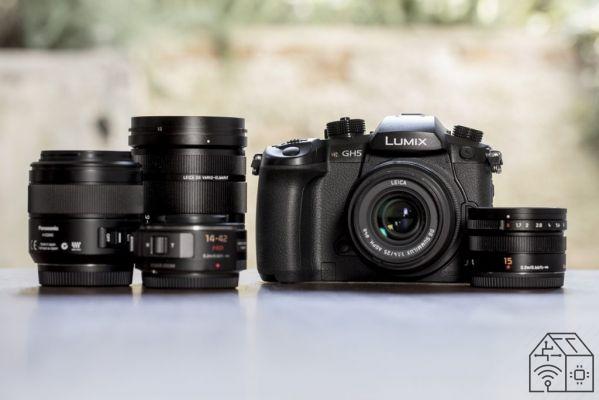
But without going that high, here's what you need to know in order not to be disappointed in your videos. First of all, pay attention to the data relating to frames per second. If we talk about values between 24 or 30 fps you can rest assured, if the camera you have spotted reaches even 60 or more fps you can also record videos in slowmotion. But beware as some cameras don't go beyond 15 fps, which is not good. Speaking of video, it is also important to take into consideration the aspect linked to image stabilization. It is essential to get better quality results.
Best camera: conclusions
It therefore seems clear to me the reason for my difficulty in answering the simple question: "Luca, will you help me choose the new camera?"
Everyone has the right camera for what they need or want to do, it's about understanding this and evaluating what the market is offering at the time. The possibilities are many as you have seen and the only real advice I can give you is to set a budget and proceed in this way: for example, if it is 300/400 euros, really evaluate the need to purchase, especially if you already own a latest generation smartphone. Or evaluate features that your smartphone does not offer you, such as an optical zoom of a certain range or maybe it is waterproof. Or that it has a sensor that is at least one inch in size.
If you plan to invest more, do it thinking about the goal you want to achieve. A good quality SLR or mirrorless camera to power your hobby can cost between 500 and 700 euros, but if you want photography to become something more than a hobby, I suggest you go straight to something more expensive, but at the same time. time at the same time offers you so much and can make you take away a lot of satisfaction, for a long time. After all, spending a little immediately means having to spend more often and ultimately more, compared to spending a lot just once.
Bestseller no. 1
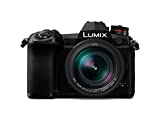 Panasonic Lumix DC-G9LEC-K Fotocamera Evil da 20,3 MP (20...
Panasonic Lumix DC-G9LEC-K Fotocamera Evil da 20,3 MP (20...
- Leica lens 12-60 mm / F2.8-F4 digital zoom 2x, 4x, point of view approx. 21 mm from the ocular lens; dioptic adjustment ...
- 1728-zone multi-model detection system, EV metering range 0-18 (F2.0 lens, equivalent to ...
- The large 0,83x OLED Live Viewfinder monitor (with an image rate of 120 fps) gives you all the control you need ...
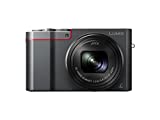 Panasonic Lumix DMC-TZ100EGS Fotocamera, Sensore 1'' 10X...
Panasonic Lumix DMC-TZ100EGS Fotocamera, Sensore 1'' 10X...
- 1 inch MOS sensor
- LEICA 10x zoom lens
- 4KPhoto, 4KVideo and PostFocus functions




















![[Review] Samsung Powerbot VR7000: the robot vacuum cleaner from Star Wars](/images/posts/6bc44de38605b5c0fa12661febb1f8af-0.jpg)





